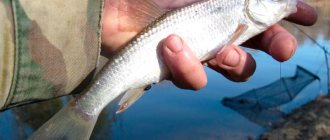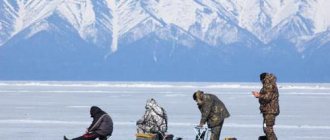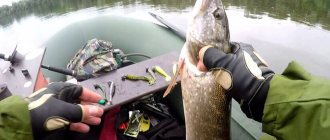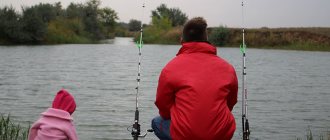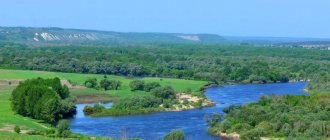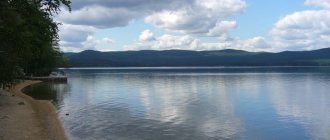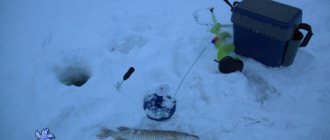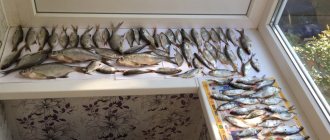Forum fishing in the Karaganda region
Forum in this category with details about topics , messages , last message
Reservoirs of the Karaganda region
All about fishing in the Karaganda region and more!
- 96 Topics
- 7,114 messages
- Last message: Yesterday 22:31:56 Vladimir
Fish from our waters
“pike”, “pike perch”, “carp, carp”, “perch”, “bream”, “roach”.
- 16 Topics
- 250 messages
- Last message: 2017-01-04 00:01:53 epiza
Open water fishing
Fishing - Discussion of everything related to open water fishing. Fishing methods, tactics, practice, rods, spinning rods, fishing lines, floats, reels, etc.
- 34 Topics
- 4,185 messages
- Last message: 2019-02-12 22:04:41 Stalk
Spearfishing
Issues of underwater hunting are discussed. Hunting places, equipment, tactics
- 6 Topics
- 301 messages
- Last message: 2017-08-02 15:32:10 ultra237
Ice fishing
We discuss winter fishing and everything connected with it, fishing rods, jigs, fishing line, spoons, nods, bait, etc.
- 26 Topics
- 1,802 messages
- Last message: 2018-08-02 13:08:27 MAX
Fishing shops
- 19 Topics
- 1,061 messages
- Last message: Yesterday 15:33:19 Snegir
Canals, dams and reservoirs
Big fishing in the Karaganda region often takes place in the Kengir reservoir. Fishermen from all over Kazakhstan come there. Previously, they study the bite forecast in the Karaganda region. The following types of fish are found in the reservoir:
bream;- crucian carp;
- perch;
- roach;
- silver bream;
- ide.
Fisherman's gear and equipment
Forum in this category with details about topics , messages , last message
Fisherman's clothes and shoes
What to wear and wear for fishing
- 4 Topics
- 272 messages
- Last message: 2017-10-31 07:59:46 Serper
Boats
Rubber, PVC, housing and everything connected with them
- 18 Topics
- 967 messages
- Last message: 2018-07-17 21:53:56 dimon-71
Camping life
No matter how much we want to fish all the time, we need to light a fire, cook fish soup, and sleep
- 9 Topics
- 387 messages
- Last message: 2016-09-15 16:43:07 kolifen
Flea market
Someone sells, someone buys, someone who doesn’t need something gives it away, someone who needs something takes it away
- 73 Topics
- 613 messages
- Last message: 2020-01-02 07:05:01 Rybolov357737
Samodelkin
We sew tents, build huts, make chairs, in a word, your crafts are necessary for fishing
- 24 Topics
- 476 messages
- Last message: 2018-01-23 17:49:49 Andrey Ivanovich
Echo sounders, GPS, Radio stations
Everything about echo sounders, GPS devices and radio stations. Questions and discussions. Models, characteristics.
- 5 Topics
- 246 messages
- Last message: 2018-01-16 11:52:13 RIVA
Other
Forum in this category with details about topics , messages , last message
Fishermen's meeting
Let's get together, agree, get acquainted and go!
- 45 Topics
- 5,341 messages
- Last message: 2018-06-04 00:17:50 RIVA
Humor and Tales
We tell funny stories that happened while fishing
- 5 Topics
- 1,175 messages
- Last message: 2017-11-24 01:11:13 Andrey Ivanovich
Wishes and suggestions
We share ideas and thoughts about the operation of the site
- 3 Topics
- 1,220 messages
- Last message: 2017-05-02 21:39:39 RIVA
Field kitchen
Culinary recipes and field kitchen
- 6 Topics
- 100 messages
- Last message: 2017-06-19 14:44:23 merq
Fishing in the Karaganda region in 2019
News of the day
. The detained poachers told the secret of their success for a good bite. Fishing inspectors were surprised by the absence of prohibited equipment.
Many people love to relax away from the bustle of the city, closer to rivers, ponds, and forests. Such a vacation can hardly be compared with time spent anywhere in the city. Well, if you add fishing gear and tackle to all this and devote a few hours to fishing, then the pleasure will be much greater.
Fishing in the Karaganda region has quite a lot of reservoirs suitable for recreation and even more so for fishing. This fact has an extremely positive effect on visits to reservoirs by amateur fishermen, and of course, professionals.
Species composition of ichthyofauna
Fishing in the Karaganda region involves catching the same species of fish that live in most reservoirs in central Russia. The most common trophies for spinners are:
- pike;
- perch;
- zander;
- asp.
Catfish of impressive size live in deep-sea pits. In shallow, overgrown spills with a depth of no more than a meter, snakeheads are found.
In the vicinity of Karaganda you can catch a variety of white fish very well. Particularly interesting is the fishing of such representatives of the ichthyofauna as carp and silver carp. These species in local reservoirs grow to enormous sizes and bring a lot of positive emotions when fishing. Trophies of floaters usually become:
- roach;
- rudd;
- crucian carp;
- bream;
- gudgeon.
Reference! Occasionally, a sloth fish is caught on the hooks of anglers. Due to its modest size, this fish is most often used as bait when fishing for predators.
Need to know!
Every season, the water level in reservoirs rises, which is affected by floods. In connection with this phenomenon, areas are formed throughout the reservoir that do not have access to large water. This is one of the favorite places for any fish and young fish. The problem is that the water gradually leaves, but the fish does not leave the secluded place, and soon this will become impossible. In turn, this factor leads to the death of fish. So, if you find such a territory, you should definitely notify the territorial forestry inspectorate so that appropriate measures can be taken.
Peculiarities
Currently, there are about 200 rivers throughout Karaganda and the region. The Nuru is considered the main river among all. This river flows in the east-west direction, and then flows into the huge Kazakhstan Lake Tengiz. One of the longest lakes in the Balkhash region is located in the south of Karaganda. It should be noted that these places are among the most frequently visited by both professional fishermen and amateur fishermen. Lake Balkhash is quite amazing; salt water flows in the east, and fresh water flows in the west. In general, the lake is shallow, and the water in it is quite warm.
Fishing in rivers
There are more than 200 rivers in the region. Nura is considered the longest. It flows from east to west of the country and then flows into Lake Tingiz. It is known that some sections of the river have been privatized by private individuals and organizations. That is why you need to study the map before going out on the river. To obtain a fishing permit, you must contact the organization that owns a specific section of the river. Fishing in the area of the mouth is generally prohibited . The following types of peaceful fish can be found in the river:
- bream;
- carp;
- crucian carp;
- carp.
Fish in Karaganda reservoirs
In this area, fish species characteristic of central Russia are more common. Predatory fish such as perch, pike perch, pike, asp do not give peace to peaceful species. In deep water you can find catfish of outstanding size, and in shallow water snakeheads are often hooked. It should be noted that the latter predominate in places with a lot of grass.
Burbot in such a place is a very rare exhibit and few people manage to bring home such a trophy. The white fish that predominates in the reservoir include grass carp, which can be found not only in deep water, but also in small pools. And of course, every angler constantly takes home trophy carp from the lake, which makes fishing even more interesting. It must be said that carp is also not difficult to find throughout the reservoir; it lives almost everywhere, and there is no need to look for any special place.
If we talk about fans of fishing with float tackle, they are also unlikely to leave the reservoir without a catch. Most often you come across the following on a float rod:
Sponge fish are often found, but, unfortunately, they are very small, and therefore most often they become bait for predatory fish.
Balkhash
An excellent reservoir for fishing, most places have long been landscaped and prepared, and most are also protected from gusts of wind, therefore, fishing will take place in comfortable conditions. It is recommended to fish at the beginning of the bay near the stones; there is a steep bank and a depth of about 2 meters. They also often occupy places overlooking the island. Fishing from a boat is also not prohibited; in this case, it is best to position yourself near the reeds. A good dirt road leads to the reservoir; along the road there are refrigeration chambers. So if the catch is not satisfactory, you can buy a few fresh fish.
Kulsa
The river is not particularly large; it flows into the Big Lake Botakara, located near the village of Zhastlek. What makes the river popular is the record number of crucian carp at the end of spring. Fishing in the middle and end of May will lead to a large number of crucian carp caught, guaranteed. Having visited a reservoir on a weekend, it is unlikely that you will find a free place; usually the entire shore is dotted with fishermen. And even on such days the catch satisfies everyone. After half an hour, some reel in their fishing rods and leave the pond, since the fish they catch will not last long. It must be said that the bites are very aggressive and frequent, that is, even a beginner will leave satisfied. In addition to crucian carp, carp is a frequent representative of large fish on the river.
This river is considered the longest in the Karaganda region. Here you most often find bream, crucian carp, roach, and a hybrid of carp and carp. Among the predators you can find pike perch and pike perch. Every place on the reservoir is suitable for fishing, but this does not apply to the mouth of the Nura; in the place where the river flows into the Samarkand reservoir you cannot fish. There is an official ban on this. You need to know that some parts of the reservoir are privatized, and therefore, in order to obtain permission to fish in a certain area, you need to contact different organizations.
Gimanjol Dam
The Zhezkazgan highway is known to all fishing enthusiasts, as it leads to one of their favorite places, the Zhamanzhol Dam. This place is incredibly beautiful, so it is suitable not only for fishermen, but also for family holidays or entertainment with friends. Mostly crucian carp, roach, and carp are found in the reservoir, but pike and perch do not give them a quiet life. A fishing permit can be obtained locally from the ranger. Well, vacation in this place is free. The cost of fishing does not exceed the amount in all other reservoirs in the region and is 500 tenge.
Eighth hydroelectric complex
Also along the Zhezkazgan highway there is an exit to another equally beautiful and popular place for fishermen - the Aktastinskoe reservoir. But the conditions for fishing are different from other bodies of water.
- Firstly, the cost of fishing is 2000 tenge.
- Secondly, the maximum weight of fish per person is 10 kilograms per day.
This cost of fishing is explained by the fact that commercial fish, carp and peled, that is, freshwater herring, are bred in the reservoir. A fishing permit is obtained locally.
Kengir reservoir
The Karakengir River is home to crucian carp, pike, roach, ide, bream, and perch. The owners of the territory are actively trying to breed carp. Of course, the owners of a separate territory cannot monitor the movement of fish, which are constantly moving from the reservoir to deep water and back, in order to find a better place with more food. Fishing permits are issued by the Zhezkazgan Society of Hunters and Fishermen.
Channel named after Satpayev
The canal has six waterworks suitable for fishing; there is a special permit for this. Each individual area is clean and large. Every year, in total, no more than 80 tons of fish are caught from six sites, of which there is a lot here. Most often you can find:
- crucian carp
- Perch
- Pike
- Cupid
- Silver carp
- Carp
- Bream
- Pike-perch
- Recently, roaches have appeared.
Fishing permits are purchased on site.
How to catch more fish
In order for the fishing to be successful and the catch to please both the fisherman and his loved ones, it is necessary to first find out the following nuances:
- find out the weather conditions for the next few days;
- the phase of the moon is also important for this; experienced fishermen monitor this strictly;
- collect quality gear;
- choose the right and effective baits;
- establish the most successful place for fishing.
Then everything remains in the hands of fate; hope for luck has never let anyone down.
Fishing in the Karaganda region is quite varied, but before going to the reservoir, it is worth learning in more detail all the intricacies of fishing in order to avoid unpleasant situations.
Read The best spinning rods for twitching and the right choice according to parameters
Reports from fishing trips in Karaganda and the region
Channel named after Satpayev
My friend and I went to the canal in the morning, left at about 10 o’clock and got there quite quickly. In just a few hours, we caught about a dozen pike between us and around one o’clock in the afternoon we started getting ready to go home, since we had to go to work that night. Under other circumstances, they would definitely stay. Overall, we really enjoyed the fishing and were also pleased with the catch.
Channel named after Satpayeva
By 10 o'clock in the morning I was at the reservoir, fishing from the side of the pump house near the parapet. At first I wanted to show off a little, but unfortunately this did not give any results. Swimming closer to the pumping station, I changed the tackle to a vibrating tail, and after a couple of casts I got the long-awaited catch, albeit a small one, a pike less than half a kilogram. I tried for another half hour, and again there was no result. I decided to change the location and headed to the rocks, there was more depth there, I was counting on pike perch, but again it passed me by, not one bite in a long time. I returned to the reeds again and chose a spoon, and in the end I came across a pike slightly larger than the previous one. This is the whole result for the day, maybe it was unlucky, because the direction of the wind changed more than five times in a whole.
Nura River
Early in the morning I chose a suitable place for myself. As a tackle, I took a donk and a feeder, and after fifteen minutes the first crucian carp weighed 300 grams. From that moment the bite began, which mainly occurred on the feeder. Until 2 o'clock in the afternoon there were about 6 kilograms of fish in the cage, I was satisfied with this, and began to get ready to go home.
Features of winter fishing
In winter, when the autumn glutton is behind us, the vital activity of the inhabitants of the reservoir decreases significantly. It does not disappear completely, but the search for the desired catch takes a longer period of time.
The summer fishing rod is replaced by a winter fishing rod, and the main way to catch a predator is vertical fishing. In this method, heavy spoons and balancers are used as bait.
The most common balancers are:
- Aqua
- Rapala
- Karismax
The main catch is small perch and pike perch, with pike being less common. In winter, pike perch stays in great depths, underwater places with bottom anomalies and flooded trees. If fishing takes place in a familiar body of water, preferably in the summer using an echo sounder, scout out the location of such holes, which will significantly reduce the time spent searching for pike perch in the winter.
In addition to balance beams, you can also catch pike perch in winter using rattlin. Unfortunately, this bait is more popular in the West. Winter girders are also used with success; the bait is live bait - a live fish no larger than 90mm in size. The live bait can be a small perch or roach.
The bait for peaceful fish can be a baited or baitless jig. The bait is a worm, bloodworm or maggot. This type of gear is used to successfully bite white bream, bream and roach. It is very rare to catch a small carp, since this fish is inactive in winter and is in a torpor.
Read Sea devils (anglers)
Fishing in the Karaganda region
Karaganda region is located in the central part of the Republic of Kazakhstan. It turns out that it is also located in the central part of the Eurasian continent. This region is home to 1,346,938 people, which is 10% of the total population of the Republic of Kazakhstan. Among this number of people there are those who prefer active recreation, which is associated with fishing, especially since all the conditions are available here.
Availability of water resources
Almost 600 water bodies of various sizes are concentrated in the Karaganda region, where you can fish and relax. In addition, there are several reservoirs in the republic. For example:
- Samarkand.
- Sherubainurinskoe.
- Kengirskoe.
- Zhezdinskoe.
In addition, up to 107 large and small rivers flow in these places. The most interesting for fishing are:
- Nura River.
- Sarysu River.
- Kulanotpes River.
- Tuyndyk River.
- Zharly River.
- Taldy River.
The list of water resources of this region includes 83 natural lakes and more than 400 artificial reservoirs. The most suitable for active fishing are:
- Lake Balkhash.
- Lake Kypshak.
- Lake Kiyakty.
- Lake Shoshkol.
In 1974, the Saptaev Canal was put into operation, which supplies water to enterprises in the central part of Kazakhstan. There are several reservoirs along the canal where anglers successfully catch fish.
Fish of lakes and rivers of the Karaganda region
Since these areas belong to central Russia, the species composition of fish is appropriate. In addition to peaceful fish, there are predators such as pike, pike perch, asp and perch. Deep-water areas are characterized by the presence of fairly large catfish, and snakeheads are found in grassy shallow waters.
Burbot, a fan of colder waters, is much less common here, and among the peaceful fish, carp is the most common. It lives in both large and small rivers and lakes almost everywhere. Carp fishing is no less interesting here. Carp are found in almost all major waterways. Moreover, these are mainly large specimens.
Fish such as bream, crucian carp, roach and minnows are found in the catches of feeder tackle lovers, as well as lovers of a regular float rod. There are also smaller fish, such as sponge fish. It is mainly used as bait for catching predatory fish.
Although rare, sturgeon are also found here. In fast-flowing rivers, small populations of sterlet are found. Sturgeon are raised in special fish farms. You can catch this fish, as well as trout, in paid ponds. In Kazakhstan, as in other neighboring countries, paid reservoirs are appearing like mushrooms after rain. This is a business, and not a very expensive one.
Fish in lakes and rivers of Karaganda
In the Karaganda region, the predominant species composition of fish is characteristic of water bodies in central Russia.
Traditionally, peaceful fish are bullied by large pike perch; pike, perch, and asp are ubiquitous. Giant catfish are found in deep-sea pools, and snakeheads are frequent guests in shallow grassy areas. Less often you can meet the only freshwater representative of the cod order - burbot. Of the white fish, grass carp is widespread and can be found both in large river basins and in small lakes. Along with this, carp fishing is no less popular, since trophy beauties are not uncommon in almost all major waterways.
Smaller representatives of peaceful species, such as bream, roach, crucian carp and gudgeons, often become the catch of fans of feeder and float fishing, and small sloth fish are the main live bait for hunters of predatory fish.
Representatives of sturgeon are very rare; small populations of sterlet live in fast-flowing rivers. The sturgeon itself is raised in special farms; it, like trout, can only be caught in ponds with paid fishing.
Features of summer fishing
As a rule, fish bite directly depends on various factors, including natural ones. This is mainly due to the change of season. The Karaganda region begins to come to life after the arrival of spring, when the temperature begins to rise significantly. As the water temperature rises, fish also become more active and begin to migrate across the reservoir in search of food. Therefore, closer to summer, it is much easier to find its anchorage in the water column than in winter.
As a rule, predatory fish are caught on a spinning rod using various artificial baits. Silicone fish is considered the most popular these days. If you take a bait no larger than 5 cm in size, then the main predatory fish caught with such bait will be perch. If you take a slightly larger bait, you can also catch a pike perch. He prefers to hunt directly at the bottom, being within the edges or holes.
Pike perch prefers white or light green bait. Before swallowing prey, it presses it to the bottom, therefore, very often pike perch is caught by the lower jaw. When hooking, you should remember that it has a powerful mouth that is not so easy to break through, even with a hook. Therefore, the hook must be decisive and powerful. The type of wiring is selected experimentally: it is difficult to simply determine the preferences of this predator. As a rule, massive baits are chosen. It is necessary to take into account not only the speed of the current, but also the fact that it is always at depth. The heavier the bait, the faster it will reach the bottom, and the less it will be carried away by the current.
Pike perch can also be caught by trolling, but in this case it is better to use deep-sea wobblers. The most famous of them are the following models:
- Tsuribito Deep Crank.
- Bomber Model A BO7A.
- Squad Minnow
The last wobbler is well suited for catching pike. Trolling allows you to fish a huge area of a reservoir, which greatly increases the chances of catching a predator. Pike can also be caught without problems using oscillating and rotating spoons.
The following models are considered the most suitable:
Larger specimens of pike prefer to hunt in the water column, so to catch them it is better to use wobblers with medium buoyancy, as well as sinking options. Smaller pike, and especially grass pike, prefer to hunt in shallows and reaches. To catch it, non-hook baits or baits with offset hooks are suitable.
Large catfish spend most of their time at depth in holes, emerging from them only to hunt. Therefore, to catch it, it is better to use deep-sea wobblers using the trolling method. Here, many fishermen practice catching catfish with their bare hands. As a rule, catfish can be found in burrows. Therefore, fishermen examine the bottom and, when they find a hole, stick their hand into it. The catfish grabs the person’s hand, all that remains is to connect the other hand and help pull the catfish out of the water.
No less popular is fishing for peaceful fish using bottom gear, including a feeder. Basically, hunting is carried out for carp using hair equipment. In the summer, the carp comes close to the shore and can be at a depth of no more than half a meter.
During this period, it is caught on baits of plant origin, such as corn, peas, and cake. The effect of using artificial flavors in bait can increase significantly, since carp fish respond well to attractants. At the same time, in each body of water they may have their own favorite smell. In addition to carp, other types of peaceful fish also come to feast on such ingredients.
An ordinary worm or maggot is suitable as bait, including vegetable baits using corn, semolina or ordinary bread. It is better to feed the fishing spot in advance in order to ensure an active bite in the future. Bottom gear is thrown to those areas of the water area where deep drops or boundaries of clear water and algae are noted.
Winter fishing in the region
Fishing in winter has a number of features, since the activity of all species is greatly reduced.
This does not deter fishing enthusiasts in the region. They know they can come home with a catch if they put in the effort. In winter, it is necessary to use special gear. Most fishermen buy large spoons and balancers, which are excellent bait for predators. It is known that perch are not that difficult to catch. Most often, small individuals weighing up to 1 kilogram are encountered. Pike perch bite much less frequently. Some anglers study the topography of the river bottom in the summer in order to catch pike perch in the winter. Schools of fish most often hide near snags and flooded trees. Some fishermen use live bait to catch pike perch, as it bites very well on small roach.
Peaceful fish do not bite very well in winter. Experienced fishermen not only study the weather forecast, but also information from the reservoirs of Karaganda in order to choose a good place. You should not go out on the ice during wind or snowstorms.
Bite forecasting
Fishermen of the Karaganda region practice predicting the fish bite in reservoirs. The forecast is developed based on a number of main factors that, in one way or another, influence the behavior of the fish. Depending on the time of year, atmospheric pressure is considered the main factor.
Many of them believe that fish behave actively at any established atmospheric pressure, but its frequent changes have a negative impact on the bite. During the changes, the fish does not have time to adapt to the existing pressure and its behavior cannot be called active. An equally important condition for a good bite is the presence of a weak wind. As a result of the action of small waves, the food supply of fish is washed onto the surface of the water, which cannot go unnoticed by it. The fish immediately begins to actively eat the food, and where there are peaceful fish, there are predatory ones. In addition to natural key factors, other factors also significantly influence the fish bite.
For example:
- Water transparency level.
- Availability of industrial facilities in close proximity.
- Presence of cloudiness.
- Ambient temperature.
- Presence of precipitation.
It is realistic to make a similar forecast of active fish behavior for about 5 days. The fact is that during this period the weather can easily change and the forecast may not be valid. One should also keep in mind the peculiarities of the Karaganda region itself. This is due to the fact that the spawning of some predatory fish does not coincide in time. The pre-spawning feast for pike begins in mid-March, and for pike perch it is mid-April. With the arrival of real summer heat, almost all types of fish reduce their activity and quite significantly. During this period, the fish bite either early in the morning or late in the evening, when the heat subsides and the water is saturated with oxygen. The pike perch becomes most active with the arrival of autumn, when it begins to stock up on nutrients for the winter. During this period, he grabs any bait indiscriminately.
Cyprinids are considered to be the most active in the summer, since they are heat-loving fish. During this period, they come close to the shore and respond to any bait of plant origin. Therefore, you can catch carp from the shore, without using long casts.
When going fishing in the Karaganda region, you need to be aware of the fact that from May 1 to June 20 there is a ban due to fish spawning. During this period, you should pay attention to paid reservoirs if you don’t want to endure so much. On paid reservoirs, this period can be ignored, since the reservoirs are artificially and regularly stocked with fish, and fishing fees can compensate for all costs.
Main features of fishing
It is known that every year many reservoirs in the region overflow their banks. Accordingly, the area occupied by water increases. In shallow water you can find a lot of young fish. Anglers who know this feature always catch live bait, and only then go to depth. Unfortunately, sometimes small lakes appear that are cut off from the main body of water. In the summer, a lot of fish die there. Environmental officials ask fishermen to report such bodies of water. This must be done to preserve the population.
Experienced fishing enthusiasts always study news from reservoirs about fishing in the Karaganda region before leaving. They know that the bite can vary greatly depending on weather conditions. So, during heavy rains it is impossible to catch large fish, since they all go to depth.
Many fishermen face difficulties due to the lack of a boat. They only take bait for one type of fish. If schools go deeper, they won’t see a catch. That is why amateurs take several types of bait with them. They know that a good bite can only be ensured by feeding the fish.
